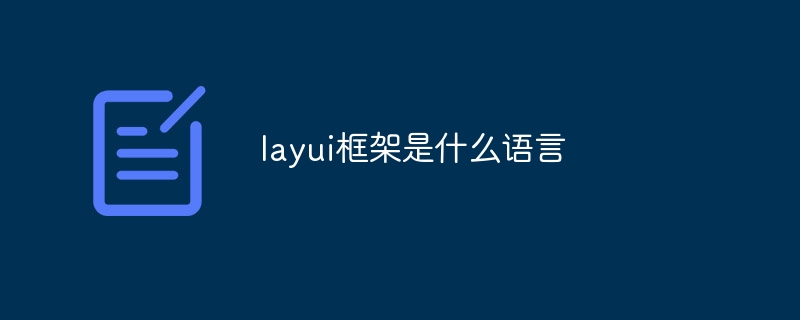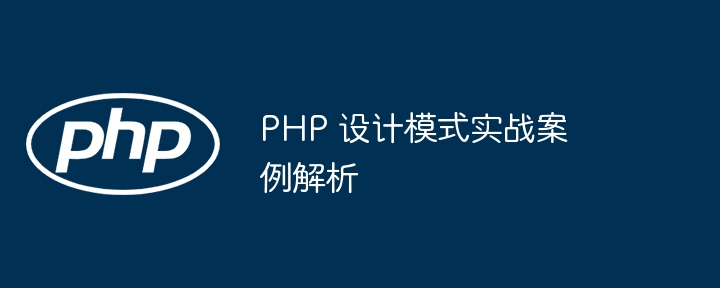 Backend Development
Backend Development PHP Tutorial
PHP Tutorial User rights management and control of blog system developed by PHP
User rights management and control of blog system developed by PHP
User rights management and control of the blog system developed by PHP
In a blog system, user rights management and control is a very important function. It can ensure that the operations performed by users in the system are within the scope allowed by their identities and roles, while also protecting the security of the blog system. In this article, we will introduce how to use PHP to develop a simple but powerful user rights management system, and provide code examples to help readers better understand.
- Database design
First, we need to design a database to store user information and permission-related data. Suppose we have two tables: users (user table) and permissions (permission table). The user table contains basic information about the user, such as username, password, role, etc. The permission table stores permission information owned by different roles.
The following is an example of a simple user table:
CREATE TABLE users (
id INT(11) PRIMARY KEY AUTO_INCREMENT,
username VARCHAR(50) NOT NULL,
password VARCHAR(255) NOT NULL,
role_id INT(11) NOT NULL,
created_at DATETIME DEFAULT CURRENT_TIMESTAMP,
UNIQUE KEY `username` (`username`)
);Example of permission table:
CREATE TABLE permissions (
id INT(11) PRIMARY KEY AUTO_INCREMENT,
name VARCHAR(50) NOT NULL,
description VARCHAR(255) NOT NULL,
UNIQUE KEY `name` (`name`)
);- User login and authentication
User login is a common feature in many websites and applications. In our blogging system we will use username and password for authentication. The following is a sample code for a simple login page:
// login.php
session_start();
if ($_SERVER["REQUEST_METHOD"] == "POST") {
$username = $_POST["username"];
$password = $_POST["password"];
// TODO: 在数据库中验证用户名和密码
// 如果验证成功,将用户信息保存到会话中
$_SESSION["username"] = $username;
// 跳转至首页或其他需要身份验证的页面
header("Location: index.php");
exit;
}- Management of roles and permissions
In the user table, we have a role_id field to represent the user's role . We can use this field to determine which permissions should be assigned to a specific user. Store these roles in the role table of the database, each role has a unique ID and a name.
The following is a simple example of a role table:
CREATE TABLE roles (
id INT(11) PRIMARY KEY AUTO_INCREMENT,
name VARCHAR(50) NOT NULL,
UNIQUE KEY `name` (`name`)
);We also need an intermediate table to associate roles with permissions. The following is a simple example of a role permissions association table:
CREATE TABLE role_permissions (
role_id INT(11) NOT NULL,
permission_id INT(11) NOT NULL,
PRIMARY KEY (`role_id`, `permission_id`),
CONSTRAINT `fk_role_permissions_roles` FOREIGN KEY (`role_id`) REFERENCES `roles` (`id`),
CONSTRAINT `fk_role_permissions_permissions` FOREIGN KEY (`permission_id`) REFERENCES `permissions` (`id`)
);- Check user permissions
After a user logs in, we need to check the permissions of his role. To do this, we can check the user's permissions before each operation that requires permission control. The following is a simple sample code for checking user permissions:
// index.php
session_start();
if (!isset($_SESSION["username"])) {
// 用户未登录,跳转至登录页面
header("Location: login.php");
exit;
}
// TODO: 根据用户的角色获取其权限列表
// 检查用户是否具有特定权限
function checkPermission($permissionName) {
// TODO: 检查用户的权限列表中是否存在需要的权限
return true; // 用户有权限
}- Permission-based access control
Using the above method of checking permissions, we can implement based on Permission access control. For example, we can only allow access to users with edit and delete permissions in the manage article page.
// admin.php
session_start();
if (!isset($_SESSION["username"])) {
// 用户未登录,跳转至登录页面
header("Location: login.php");
exit;
}
if (!checkPermission("edit_article") && !checkPermission("delete_article")) {
// 用户没有编辑和删除权限,跳转至其他页面
header("Location: index.php");
exit;
}
// 显示管理文章页面
// TODO: 你的代码Through the above steps, we can manage and control user rights based on the user's role and permissions. Of course, the above is just a simple example, and actual blog systems may have more complex permission requirements. By extending the above example, you can implement a more comprehensive user rights management system based on actual needs.
Summary
User rights management and control is a key function, which not only protects the security of the system, but also enables more flexible user control based on role and permission settings. In this article, we introduce how to develop a simple but powerful user rights management system using PHP and provide relevant code examples. Readers can implement the rights management function in their blog system based on these examples, and expand and optimize it according to actual needs.
The above is the detailed content of User rights management and control of blog system developed by PHP. For more information, please follow other related articles on the PHP Chinese website!
 使用Vue开发中遇到的登录验证和用户权限管理问题Oct 09, 2023 am 10:12 AM
使用Vue开发中遇到的登录验证和用户权限管理问题Oct 09, 2023 am 10:12 AM使用Vue开发中遇到的登录验证和用户权限管理问题,需要具体代码示例在Vue的开发过程中,登录验证和用户权限管理是一个非常重要的问题。当用户登录系统时,需要对其进行验证,并根据不同的权限级别,决定用户能够访问的页面和功能。下面将结合具体的代码示例,介绍如何在Vue中实现登录验证和用户权限管理。登录验证登录验证是保证系统安全性的重要环节。在前端开发中,我们通常会
 PHP中如何使用对象-关系映射(ORM)简化数据库操作?May 07, 2024 am 08:39 AM
PHP中如何使用对象-关系映射(ORM)简化数据库操作?May 07, 2024 am 08:39 AM使用ORM可简化PHP中的数据库操作,它将对象映射到关系数据库中。Laravel中的EloquentORM允许使用面向对象的语法与数据库交互,可通过定义模型类、使用Eloquent方法或在实战中构建博客系统等方式来使用ORM。
 如何利用Laravel实现用户权限管理功能Nov 02, 2023 pm 02:09 PM
如何利用Laravel实现用户权限管理功能Nov 02, 2023 pm 02:09 PM如何利用Laravel实现用户权限管理功能随着Web应用程序的发展,用户权限管理在许多项目中变得越来越重要。Laravel作为流行的PHP框架,为处理用户权限管理提供了许多强大的工具和功能。本文将介绍如何使用Laravel实现用户权限管理功能,并提供具体的代码示例。数据库设计首先,我们需要设计一个数据库模型来存储用户、角色和权限的关系。为了简化操作,我们将使
 如何利用PHP开发一个简单的用户权限管理功能Sep 25, 2023 pm 12:30 PM
如何利用PHP开发一个简单的用户权限管理功能Sep 25, 2023 pm 12:30 PM如何利用PHP开发一个简单的用户权限管理功能引言:随着互联网的发展,用户权限管理功能变得越来越重要。PHP作为一种流行的服务器端脚本语言,被广泛应用于开发动态网站。利用PHP开发一个简单的用户权限管理功能,可以帮助网站管理员灵活地控制用户的访问权限,保护网站的安全性。本文将介绍如何使用PHP来实现这样的功能,并提供具体的代码示例。一、数据库设计首先,我们需要
 layui框架是什么语言Apr 04, 2024 am 04:39 AM
layui框架是什么语言Apr 04, 2024 am 04:39 AMlayui框架是一款基于JavaScript的前端框架,提供了一套易用的UI组件和工具,帮助开发者快速构建响应式Web应用。其特点包括:模块化、轻量级、响应式,并拥有完善的文档和社区支持。layui广泛应用于管理后台系统、电商网站和移动端应用等开发中。优点在于上手快、提高效率、维护方便,缺点是定制性较差、技术更新较慢。
 如何使用PHP实现博客系统Jun 27, 2023 pm 12:57 PM
如何使用PHP实现博客系统Jun 27, 2023 pm 12:57 PM随着互联网的不断发展和普及,博客已经成为了人们表达自己、记录生活、分享经验的一个重要平台。现在的博客系统已经非常成熟,但是如果你想学习如何使用PHP来实现博客系统,那么这篇文章会对你有所启发。PHP是一种开放源代码的、可嵌入HTML中的脚本语言,特别适用于Web开发。使用PHP编写博客系统,可以进行定制化开发和灵活的网站管理。接下来,我们将介绍如何使用PHP
 PHP 设计模式实战案例解析May 08, 2024 am 08:09 AM
PHP 设计模式实战案例解析May 08, 2024 am 08:09 AM1.工厂模式:分离对象创建和业务逻辑,通过工厂类创建指定类型的对象。2.观察者模式:允许主题对象通知观察者对象其状态更改,实现松耦合和观察者模式。
 PHP博客系统的开发与优化Aug 08, 2023 am 09:27 AM
PHP博客系统的开发与优化Aug 08, 2023 am 09:27 AMPHP博客系统的开发与优化前言随着互联网的快速发展,博客已经成为了人们记录生活、分享观点和展示个人才华的重要平台。为了满足不同人群的需求,开发一个高效稳定的博客系统不仅需要合理的架构设计,还需要对系统的性能进行优化。本文将针对PHP博客系统的开发和优化进行详细的探讨,并附上代码示例。一、系统架构设计数据库设计博客系统的核心是数据的存储和管理,因此必须设计合理


Hot AI Tools

Undresser.AI Undress
AI-powered app for creating realistic nude photos

AI Clothes Remover
Online AI tool for removing clothes from photos.

Undress AI Tool
Undress images for free

Clothoff.io
AI clothes remover

AI Hentai Generator
Generate AI Hentai for free.

Hot Article

Hot Tools

mPDF
mPDF is a PHP library that can generate PDF files from UTF-8 encoded HTML. The original author, Ian Back, wrote mPDF to output PDF files "on the fly" from his website and handle different languages. It is slower than original scripts like HTML2FPDF and produces larger files when using Unicode fonts, but supports CSS styles etc. and has a lot of enhancements. Supports almost all languages, including RTL (Arabic and Hebrew) and CJK (Chinese, Japanese and Korean). Supports nested block-level elements (such as P, DIV),

Dreamweaver CS6
Visual web development tools

SublimeText3 Mac version
God-level code editing software (SublimeText3)

SublimeText3 Linux new version
SublimeText3 Linux latest version

SublimeText3 English version
Recommended: Win version, supports code prompts!





